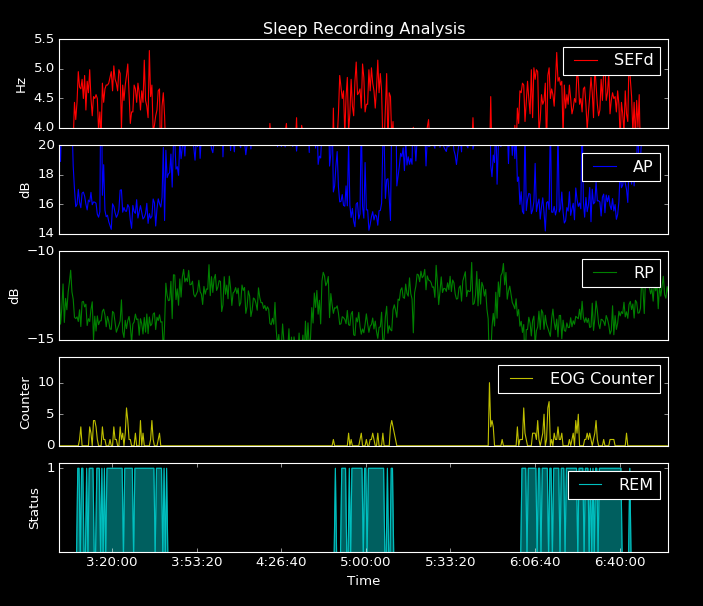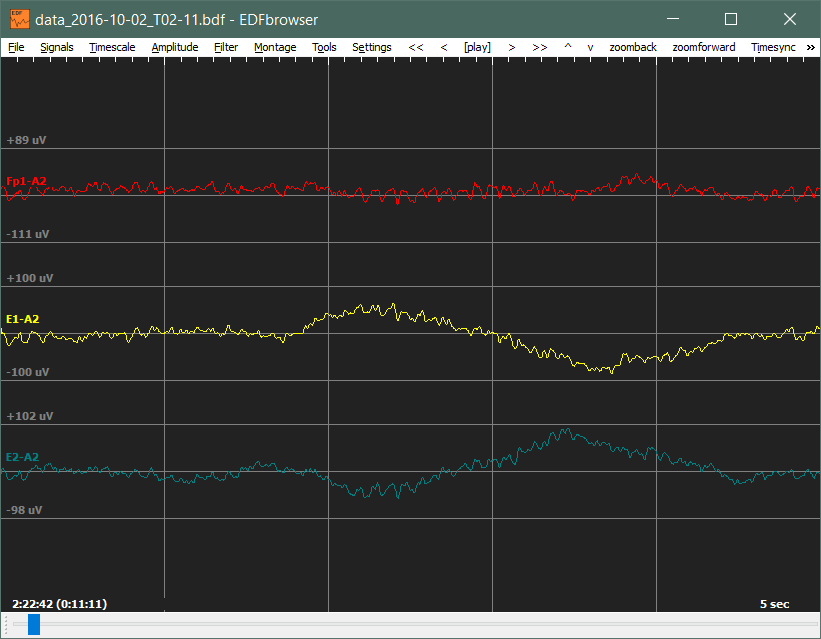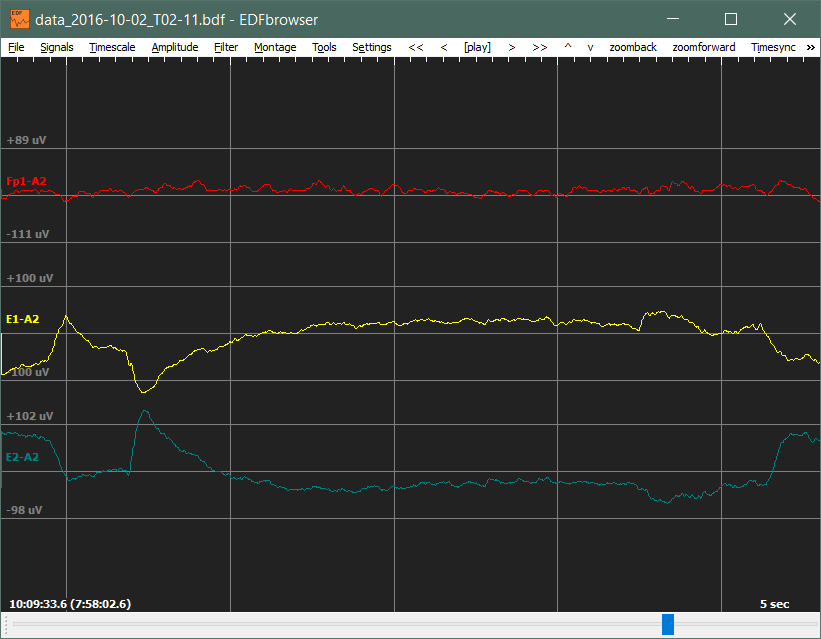Results
A plot showing the analysis of sleep ranging from around 3:20 AM to 6:50 AM is shown below:

The first 3 graphs show the statistical values for the REM stage detection algorithm (SEFd, AP, and RP). You can see that whenever the REM stage takes place, the SEFd value increases dramatically while the AP and RP values decrease. The results of the algorithm is shown in the last (fifth) plot.
Again, we should remind ourselves that during REM stage, there are Rapid Eye Movements (duh). Therefore if our program is working correctly, then the results calculated from the EEG brainwave signals must be filled with eye movements.
Let's see if that is true: the fourth graph shows the EOG counter, which is the frequency of eye movements detected from the EOG channels. We can see clearly that there is a correlation between eye movements (yellow) and the REM stage (blue)!
Note that the REM stage shown in the graph was calculated only from the EEG electrode and not from any of the EOG channels. Therefore, the correlation between the two demonstrates that our program, is indeed, correctly detecting REM stages!
Example of Sleep Stages
According to the OpenLD analysis software, here is how each sleep stages look like. Note, the EEG signal has a red color while EOG Eye movement signals are yellow and dark blue.
Awake Stage: Note the presence of Alpha waves (10 Hz) and slow, eye movements (out-of-phase signals)

NREM: Note the presence of Delta waves ( > 4 Hz) and no eye movements (the two signals are in-phase)

REM: Note the lack of presence of alpha/delta waves and the presence of Rapid Eye Movements.

Reference used for the above evaluation
Benbadis, S. R., & Lutsep, H. L. (2015, October 12). Normal Awake EEG. Retrieved October 02, 2016, from http://emedicine.medscape.com/article/1140143-overview
Now we know that the OpenLD platform can successfully detect whether or not a person is dreaming. This is essential in inducing Lucid Dreams. In the next post, I will discuss how I will induce Lucid Dreams by making the OpenLD play a sound in my dreams. Stay tuned!
Discussions
Become a Hackaday.io Member
Create an account to leave a comment. Already have an account? Log In.